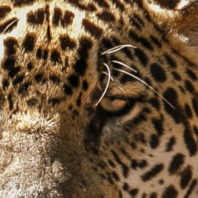
Graduate Research


Stopping the blighters

Peace for the wounded warrior
Since the earliest days of the republic, Native Americans have stepped up to defend the United States at higher rates than any other ethnic group.
From General Washington’s inclusion of Tuscarora and Oneida warriors at Valley Forge, through the world wars and Vietnam to today’s conflicts in the Middle East, Native Americans continue to answer their cultural calling to serve.
Traditionally, these soldiers were welcomed home with healing ceremonies that helped reintegrate them with the tribe and wider society. Compassionate medicine men, and women, used time-honored practices to mend the emotional, spiritual, and physical trauma of war.
“Unfortunately, the U.S. government banned Native religious ceremonies … » More …

Gallery: Wildlife of Honduras
WSU environmental biology doctoral student Travis King joined a team of biologists in 2017 to monitor wildlife in the remote region of La Mosquitia in Honduras, home to the newly-discovery “City of the Lost Monkey God.”
Travis and his colleagues in Conservation International and the Honduran government used motion-activated camera traps, hair collecting traps, and other methods to identify the wild animals in this untamed region. Below are some of the images that King brought back.
Read more about Travis and his research in “To catch a cat.”

To catch a cat
Trekking through one of the largest unexplored rainforests in the world, La Mosquitia in Honduras, Travis King set up traps last spring to catch jaguars—or whatever other animal came into range of the cameras.
King, an environmental science graduate student at Washington State University, was one of twelve biologists conducting the first biological survey of the area known as La Ciudad Blanca or the Lost City of the Monkey God, astounding ruins first identified in 2012.
It was already familiar work for King, who has used remote-sensing camera traps and other methods to identify the behavior and distribution of elusive big cats … » More …
